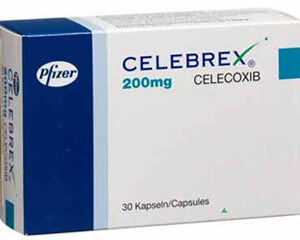Colchicine Medication Profile
Therapeutic Classification
Colchicine is classified as an anti-gout agent. It is primarily used for the treatment and prevention of gout attacks and familial Mediterranean fever.
Chemical Structure
Colchicine is a tricyclic alkaloid, obtained from the plant Colchicum autumnale. Its chemical formula is C22H25NO6.
Mechanism of Action
Colchicine disrupts cytoskeletal functions by inhibiting beta-tubulin, preventing the polymerization of microtubules, thereby blocking leukocyte migration and phagocytosis. This leads to a decrease in inflammation and alleviation of pain in gout flares.
Indications and Usage
Primary Applications
Colchicine is indicated for acute gout flares and prophylaxis of gout. Additionally, it is approved for the treatment of familial Mediterranean fever in adults and children.
Off-label Uses
Though not FDA-approved for these indications, colchicine may be used off-label for pericarditis, Behçet’s syndrome, and other inflammatory conditions.
Administration Guidelines
Dosage Forms
Colchicine is available in both tablet and capsule formulations for oral administration.
Initial Dosage
The recommended dosage of colchicine for acute gout flare is 1.2 mg at the onset of symptoms followed by 0.6 mg one hour later.
Maintenance Dosage
For gout prophylaxis, the dosage varies from 0.3 to 0.6 mg once or twice daily. Adjustments should be made based on efficacy and tolerability.
Administration with Food
Colchicine can be taken with or without food. Food does not significantly affect the bioavailability of colchicine.
Pharmacokinetics
Absorption and Bioavailability
Colchicine is well absorbed from the gastrointestinal tract with peak plasma concentrations occurring between 0.5 and 2 hours post-dose.
Distribution in the Body
Colchicine is distributed extensively into body tissues and has a large volume of distribution.
Metabolism and Metabolites
Colchicine is metabolized primarily through the cytochrome P450 3A4 (CYP3A4) enzyme pathway, and also by the P-glycoprotein transporter system. The major metabolites possess reduced pharmacological activity.
Excretion and Half-life
The drug is excreted primarily in feces via the biliary tract. The renal route accounts for about 10-20% of elimination. The half-life of colchicine is approximately 4 to 10 hours.
Drug Interactions
Impact of Other Drugs on Colchicine
Concomitant use of CYP3A4 inhibitors (e.g., ketoconazole, itraconazole) can increase colchicine plasma levels. Similarly, P-glycoprotein inhibitors (e.g., cyclosporine, ranolazine) may increase colchicine exposure.
Colchicine Effect on Other Drugs
Colchicine may potentiate the effects of other medications that cause myopathy or neuropathy.
Adjustments for Drug Interactions
Dose adjustments of colchicine may be required when it is co-administered with strong CYP3A4 or P-glycoprotein inhibitors.
Special Populations
Renal Impairment Considerations
In patients with renal impairment, colchicine plasma levels can be significantly increased, requiring dose reduction or increased dosing intervals to prevent toxicity.
Hepatic Impairment Considerations
Colchicine metabolism may be affected in patients with hepatic impairment, necessitating similar dosage adjustments as in renal impairment.
Pediatric and Geriatric Usage
Dosing in pediatric patients should be carefully calculated based on body weight. Geriatric patients may require dosage adjustments due to age-related declines in renal function.
Use during Pregnancy and Lactation
Colchicine is a pregnancy category C drug. It should be used during pregnancy only if the potential benefit justifies the potential risk to the fetus. Caution is advised when colchicine is administered to a nursing mother.
Adverse Reactions and Side Effects
Common Side Effects
Gastrointestinal disturbances such as diarrhea, nausea, and vomiting are among the most common side effects of colchicine.
Neuromuscular Toxicity
Myopathy and neuromuscular toxicity have been reported with prolonged colchicine therapy, and are increased in renal or hepatic impairment and with concomitant use of statins.
Hematologic Effects
Bone marrow depression, including agranulocytosis, thrombocytopenia, and aplastic anemia, has been reported in patients on long-term colchicine therapy.
Monitoring and Laboratory Tests
Liver and Kidney Function
Regular monitoring of liver enzymes and renal function is recommended during prolonged therapy with colchicine.
Blood Counts
Periodic complete blood counts are advised for patients taking colchicine for extended periods.
Muscle Enzymes
Monitoring of creatine kinase (CK) levels may be warranted in some patients to detect myopathy early.





Reviews
There are no reviews yet.